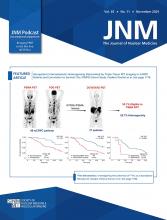Visual Abstract
Abstract
The phase 3 VISION trial demonstrated that [177Lu]Lu-PSMA-617 prolonged progression-free survival and overall survival (OS) in prostate-specific membrane antigen [PSMA]–positive metastatic castration-resistant prostate cancer (mCRPC) patients who progressed on taxane-based chemotherapy and androgen receptor–signaling inhibitors (ARSIs). The U.S. expanded-access program (EAP; NCT04825652) was opened to provide access to [177Lu]Lu-PSMA-617 for eligible patients until regulatory approval was obtained. This study aimed to evaluate the efficacy and safety profile of [177Lu]Lu-PSMA-617 within the EAP and compare the results with those from the VISION trial. Methods: Patients enrolled in the EAP at 4 institutions in the United States with available toxicity and outcome data were included. Outcome measures included OS, a prostate-specific antigen (PSA) response rate (RR) of at least 50%, and incidences of toxicity according to Common Terminology Criteria for Adverse Events version 5.0. Differences in baseline characteristics, outcome data, and toxicity between the EAP and VISION were evaluated using t testing of proportions and survival analyses. Results: In total, 117 patients with mCRPC who received [177Lu]Lu-PSMA-617 within the EAP between May 2021 and March 2022 were eligible and included in this analysis. Patients enrolled in the EAP were more heavily pretreated with ARSI (≥2 ARSI regimens: 70% vs. 46%; P < 0.001) and had worse performance status at baseline (Eastern Cooperative Oncology Group score ≥ 2: 19% vs. 7%; P < 0.001) than VISION patients. EAP and VISION patients had similar levels of grade 3 or higher anemia (18% vs. 13%; P = 0.15), thrombocytopenia (13% vs. 8%; P = 0.13), and neutropenia (3% vs. 3%; P = 0.85) and similar PSA RRs (42% vs. 46%; P = 0.50) and OS (median: 15.1 vs. 15.3 mo; P > 0.05). Conclusion: Patients with PSMA-positive mCRPC who received [177Lu]Lu-PSMA-617 within the EAP were later in their disease trajectory than VISION patients. Patients enrolled in the EAP achieved similar PSA RRs and OS and had a safety profile similar to that of the VISION trial patients.
Footnotes
Guest Editor: Rodney Hicks, University of Melbourne
Published online Sep. 26, 2024.
- © 2024 by the Society of Nuclear Medicine and Molecular Imaging.
This article requires a subscription to view the full text. If you have a subscription you may use the login form below to view the article. Access to this article can also be purchased.
SNMMI members
Login to the site using your SNMMI member credentials
Individuals
Login as an individual user








